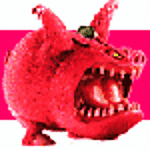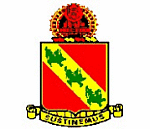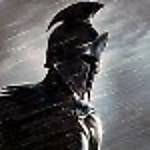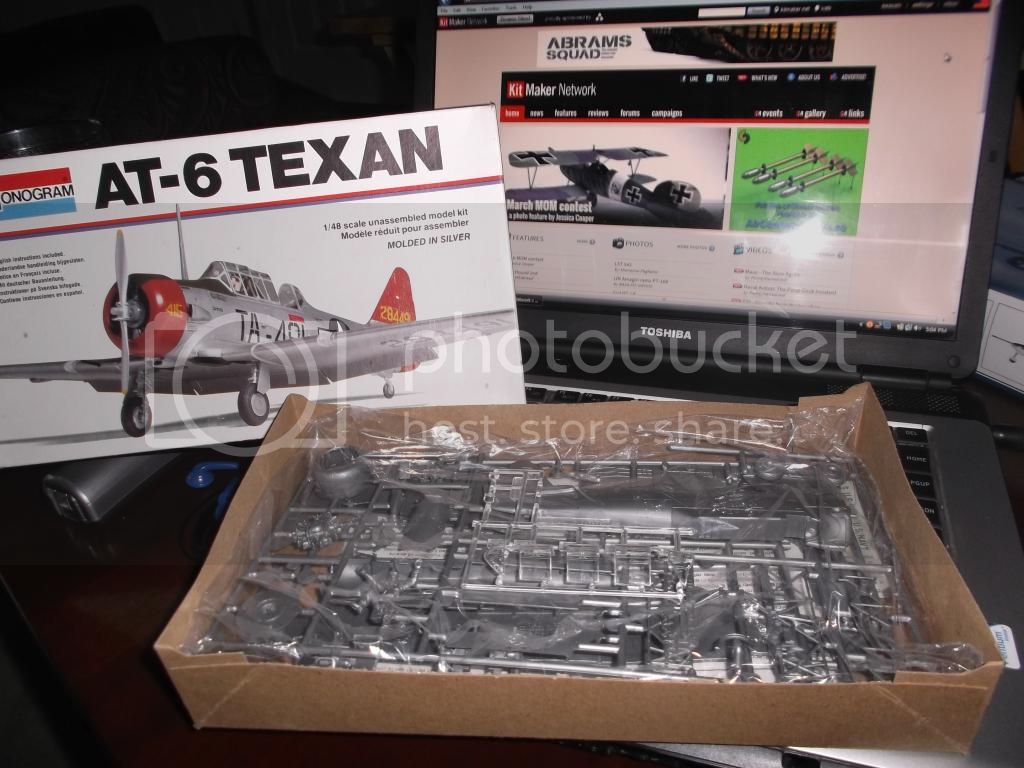Continuing on with the humble AT-11, having accomplished most of the obvious hacking and slashing on the fuselage I've resigned myself to trying to flesh out the inside with more (very wee) bits and pieces of plastic. The major project was simulating the metal brackets used to keep the practice bombs lined up with the bomb bay openings. They are pretty obvious inside as in this photo.

While these are "U" shaped in reality, I opted for some styrene "I" beam shaped stock which was closest I could find to the size I needed. The next part was real tedious, drilling a kazillion very small holes in about 75 mm of stock. The end result however looks the part and more importantly fits.




Things are a little out of kilter at this stage, but once I get the rear flooring in I can get everything squared away and tied down. The overhead racks are 20 thousands sheet styrene and 1 mm very thin strips (which at this scale are a major pain to work with). Having just about expended my fiddly quotient on the interior, I needed a little more hack and slash to vent my frustration so I launched into the engine nacelles. These are the donors from the Hobbycraft C-45 kit. While they do have some faint lines the represent the cowl flaps, they are the wrong number and really not worth the effort. Unfortunately I didn't think to take a before picture prior to my frenzy of destruction on the cowlings, which is ok I guess, because there wasn't much to see anyway. Unlike the original AT-11 cowlings, the C-45 cowls attach to the wing in a different location. The join is not at the end of the cowling but rather a little further back behind the firewall. This puts my cut point in the middle of the kit part, not just a notch in the end as it the AT-11. My solution was to guesstimate about the size and location of the openings, I cut pieces of masking tape to size and applied them to each cowling to use as a scribing template.

Once I had the location marked I drilled a couple of holes and routed out enough between them to get a jewelers file in and then filed until I hit my scribed lines. The original idea was to make the cowl flaps out of sheet styrene, but they turned out to be overly fiddly and I feared they would break if I bent them outward to the open position. The final solution was to use metal foil which I could bend to my heart's content, was thinner and looked like metal.


The inside of the cowling was beveled to get the foil closer to the outside of the cowling. I've still got a little lip on all of them, but I didn't want to screw up the opening and make a bigger mess. Now that I've got these nifty cowlings, I probably ought to put engines in the things. After a review of my available choices I opted to go with the C-45 engines, they were the best of the lot, and while not perfect, they weren't all that bad either. This is what they are suppose to look like:



Originally I thought I'd add an ignition harness ring to the gearbox, but on reviewing the photos, I realized the ring is under the push-rods, so in the end I opted to just try an highlight the kit's version with chrome silver paint.


Engines a-la-Mangus (engines-on-a-stick). I opted to use gloss black on the push-rods so I didn't want to use flat black on the ignition wires. I decided to try and find a light brownish color that matches (somewhat) the color seen on some period ignition wires. After going through my entire color collection of browns I still couldn't find a color I thought looked right. Since the color I was thinking of had a somewhat yellowish tone, it was into the yellow section and I hit upon Humbrol Africa Corps desert yellow. This thing is so old that the paint number was HM2 which is about 2 or 3 Humbrol numbering systems ago. I have my quibbles with Humbrol paint, but longevity ain't one of them. This paint is probably about 40 years old, you've got to stir 'em good, but they bounce back every time. Once shoved into an engine cowling, these will do the trick.
The interior coloring I decided on was interior green for the forward section and bare metal for the aft compartment. All the period photos I found indicated bare metal:



The last one was from a restoration project and cinched it for me. It's a note to the flight crews, and I figured it wouldn't be stenciled onto the bare metal if someone was going to come along and cover it with primer or interior paint afterwards. The forward section however is under a lot of glazing and glare would be an issue. I also found a couple of relic photos that show an interior green front.

This is after the application of some Model Master non-buffing aluminum metalizer to the aft compartment:




This shot shows the bomb bay area (a restoration) with the wood box that covered the extra bombing and navigation equipment removed. Of note here is the remnants of a dark paint on the plywood floor which I interpreted to be a bronze green color. Referring back to the shot of the bombardier checking the bomb fuses, it looks like the top of the box he is kneeling on is a darker color than the sides of the box. Based on this, I opted to paint the aft flooring bronze green on plywood.

Some oxygen bottles and sundry other small bits to finish off the aft compartment, then it's up front. Carry on.
DR



































































































































